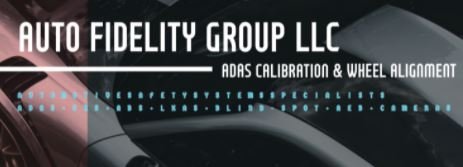Mechanic’s Eye
When your livelihood is primarily working with your hands, they become an extension of your eyes. Feeling around corners, finding odd placed bolts, and examining the area where your eyes can’t reach are all part of the job requirement in the automotive field. Learning to “see” with the tips of your fingers is a trait every seasoned mechanic is familiar with. Being able to place an open end wrench into a cavity, and only use the tip of one finger to locate the nut or bolt are just some of the ways mechanics for generations have solved, or perhaps cut the hours on a job.
The mechanic’s eye isn’t just at the tip of his fingers; it’s the ability to reason through a problem, and come up with a solution that will get the job done faster and more efficiently than what is described in the service manuals. If mechanics always followed the engineering instructions on how things needed to be removed or replaced, there’s a good chance a lot of repairs would have been slowed to a crawl. As a mechanic, I appreciate the efforts of all those dedicated engineers, but in the field some things work better when we, (mechanics)… well… let’s say… cut a few corners.
I don’t like to call them “short-cuts”, they do save time in most cases, but it’s more of a way of examining a problem and figuring out the easiest solution. There are several reasons for all of this fuss. In some instances it’s to avoid marring the paint or finish to the car, or causing more problems with the number of other unrelated components that need to be removed. I, for one never like those jobs that require the mechanic to disassemble an entire section of the car just to change one component. Finding ways of combating these before they become issues is part of having that “mechanic’s eye”.
Here’s a simple test of your “mechanic’s eye”. Stand at a doorway where you can reach around to the opposite side of the wall. Stand close enough to the edge of the doorway trim where you can still reach both hands around the corner. Now take a bolt and nut, place the head of the bolt flat against the other side of the wall from where you are standing, and with the other hand screw on the nut. Don’t look around the corner, don’t lean around the wall… you stay on one side, the bolt and nut on the other. Can you do it? I know you’ll try it. If you have to fumble around a bit… you need some practice. If you can do it on the first try… you’ve got that mechanic’s eye for sure.
Some time ago, well… many years ago, the old Camaros had an issue with the blower motor when it came time to replace it. The blower motor was actually tucked in the far corner behind the inner fender. (Several other GM products were like this, too.) You could possibly get all the bolts and screws out of it, but it wasn’t going to come out of the hole. By proper procedure guidelines you were either to remove the fender, or the inner fender to gain access. In those days the inner fender wasn’t plastic like they are today, and it took a lot of effort to wriggle that hunk of metal out of there. So, what did the mechanic come up with? Cut an access hole into the inner fender and remove the blower that way, then make a patch for the inner fender. Soon after this became the standard practice, a patch piece was developed (I suppose by the engineering department) with detailed instruction on how to cut out the inner fender.
Nowadays, it’s plastic, plastic… and more plastic, and even more hidden components than ever before. That “mechanic’s eye” is just as important today (if not more) as it was back then. Plastic has a tendency to snap, not bend out of the way like the metal body parts of the older vehicles, which makes the job even tougher when it comes to moving things around. Just the other day I had a 2001 Cadillac in that wouldn’t change from the floor vents to the defroster. It was the mode actuator acting up. From under the driver’s side of the dash I could just make out the mode actuator, but only a glimpse of it. If you look up the labor time on this job you’ll find it requires removing the entire dash out of the way. (Practically an all day job.) However, if a mechanic has some dexterity and willing to reach you can do the job in no time. You just have to have that “mechanic’s eye” to get it done. Like many of these situations, you have a pretty good idea of the location of the screws, the shape of the part, and how it comes off, but ya just can’t see the screws or the part. You’ve got to trust the end of your fingers, as your mind’s eye puts the puzzle together.
After taking the three screws out that secure the actuator to the housing, the only thing left to do is remove the radio and use that opening as a way to pry the old actuator off of the housing using a large, flat screw driver. Mind you, the tension on which part of the plastic parts, and where you are placing the tip of the screw driver is all done by feel. Is this technique by the book? Nope. Can it be done? Yep. Just takes that mechanic’s eye on the tip of your finger to do it.
There are so many examples of reaching into an engine cavity or behind a dash that it’s impossible to list them all. Any seasoned tech can probably tell you a thousand ways they have worked on a project, and then suddenly have a “Eureka” moment of a way to simplify the repair, even though it isn’t mentioned in the step by step procedures. It could make the entire job easier, and all it took was some good old fashion ingenuity.
I’m constantly listening up for any new techniques that other mechanics have come up with to solve some sort of problem in the field. Whether it’s from an internet forum, convention, trade magazine, or emails … anything to make my job easier. The more you know, the better prepared you’ll be to tackle some of these odd problems. As a mechanic we all have the same goal in mind, “Finish a job as efficiently and as quickly as possible with the least amount of disturbance to the rest of the vehicle.” And that takes a little more than just a quick glance at a problem… that takes a mechanic’s eye.














Recommended Comments
Create an account or sign in to comment
You need to be a member in order to leave a comment
Create an account
Sign up for a new account in our community. It's easy!
Register a new accountSign in
Already have an account? Sign in here.
Sign In Now